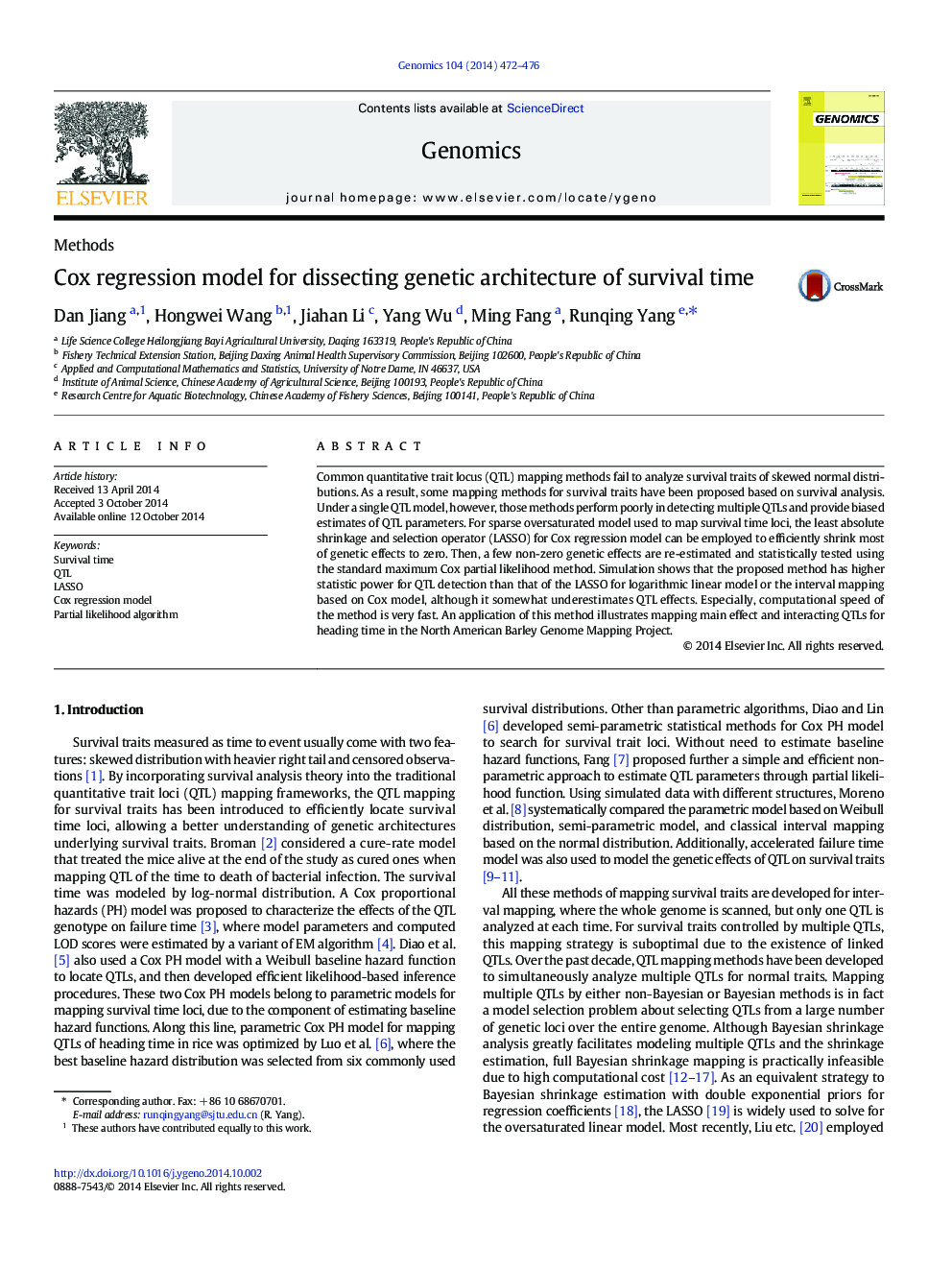| کد مقاله | کد نشریه | سال انتشار | مقاله انگلیسی | نسخه تمام متن |
|---|---|---|---|---|
| 2820671 | 1160879 | 2014 | 5 صفحه PDF | دانلود رایگان |
• Cox regression model is constructed to describe genetic architecture for survival traits.
• LASSO for Cox regression model is used to efficiently shrink most of genetic effects to zero.
• Survival trait loci are statistically inferred using maximum partial likelihood method.
• The method has high statistic power for QTL detection and fast computational speed.
• This method is applied to map main effect and interacting QTLs for heading time of Barley.
Common quantitative trait locus (QTL) mapping methods fail to analyze survival traits of skewed normal distributions. As a result, some mapping methods for survival traits have been proposed based on survival analysis. Under a single QTL model, however, those methods perform poorly in detecting multiple QTLs and provide biased estimates of QTL parameters. For sparse oversaturated model used to map survival time loci, the least absolute shrinkage and selection operator (LASSO) for Cox regression model can be employed to efficiently shrink most of genetic effects to zero. Then, a few non-zero genetic effects are re-estimated and statistically tested using the standard maximum Cox partial likelihood method. Simulation shows that the proposed method has higher statistic power for QTL detection than that of the LASSO for logarithmic linear model or the interval mapping based on Cox model, although it somewhat underestimates QTL effects. Especially, computational speed of the method is very fast. An application of this method illustrates mapping main effect and interacting QTLs for heading time in the North American Barley Genome Mapping Project.
Journal: Genomics - Volume 104, Issue 6, Part B, December 2014, Pages 472–476
